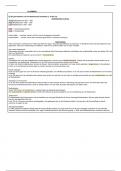Samenvatting
Summary History of the Middle East - Weeks 6 to 12
- Instelling
- Universiteit Leiden (UL)
A comprehensive summary of everything you could possibly need to know for the final exam for History of the Middle East, including lecture notes and readings! Helped me get a 9.5 for the final exam!
[Meer zien]















